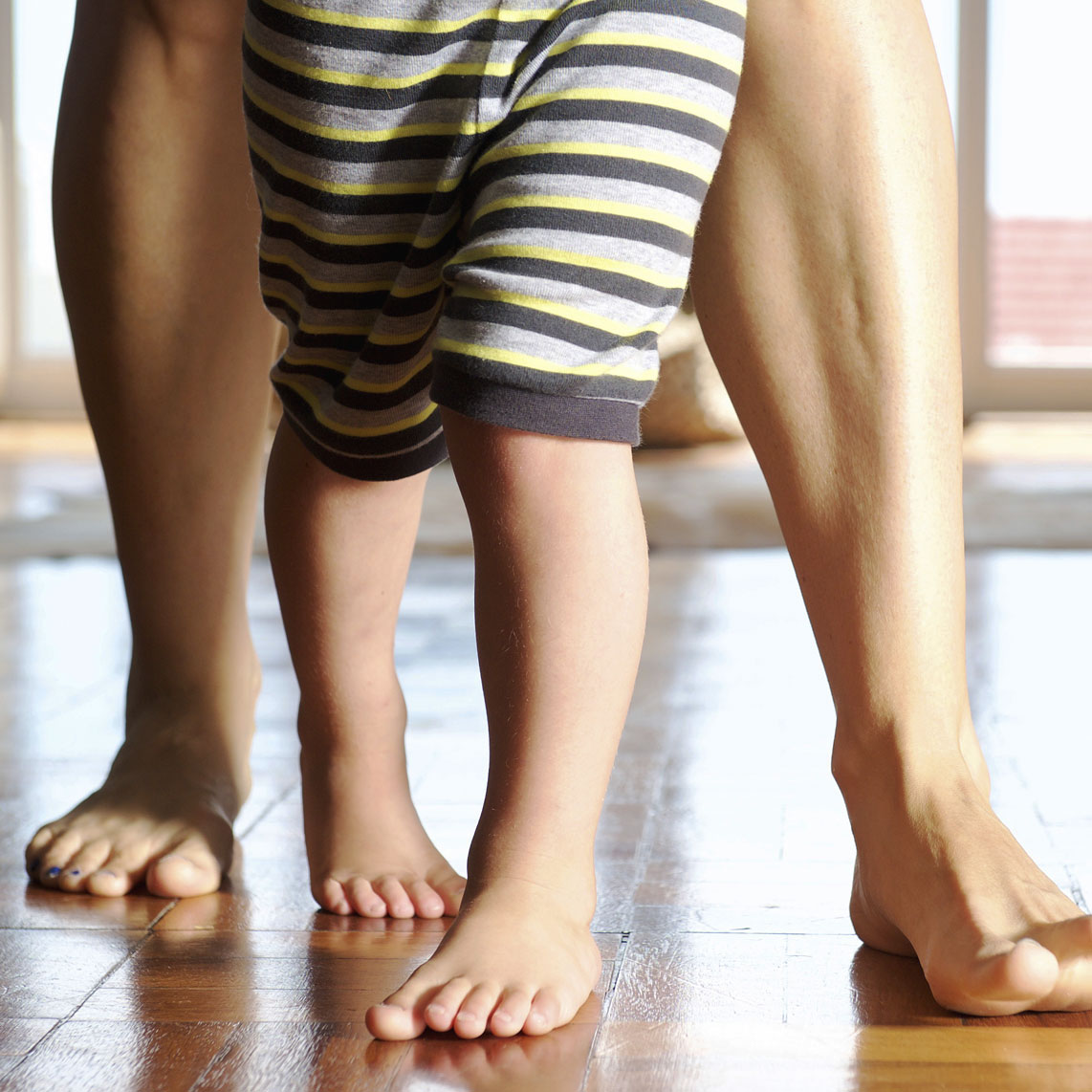Intoeing / outoeing gait

Overview
Intoeing is a common concern of families with young children. Intoeing, or being ‘pigeon-toed’ refers to children whose feet turn inwards instead of pointing ahead when they walk or run. It is a condition that can cause young children to trip or move awkwardly.
Intoeing often corrects itself as children get older depending on the underlying causes. Casts, braces, and surgery have shown to be ineffective treatment methods, however, orthotics have been shown to be effective in improving the child’s gait pattern and correcting the foot position.
Early intervention with accurate, Kinetic orthotic therapy can assist in preventing future complications arising from poor foot position and gait patterns. The latest approach developed by Dan Everson Podiatry in conjunction with Kinetic Orthotics is an orthotic product which combines European technology with the patented Kinetic designs. To date this product has proven to be highly effective in correcting the foot position and gait of children with intoeing.
The most common causes of intoeing are metatarsus adductus where the foot turns inwards, tibial torsion which involves the bone of the lower leg turning inwards between the knee and ankle, and femoral anteversion where the thigh bone turns inwards between the hip and the knee. You can find more information about these conditions below.
Tibial Torsion
Overview
Tibial torsion, also known as twisted shin, occurs in young children and involves an inward rotation of the shin bones located between the knee and ankle. It causes the feet to turn inward and take a ‘pigeon-toed’ appearance. It is most often seen in kids who are two years old.
Boys and girls are both impacted equally, and two thirds of patients are affected in both feet. Disability from tibial torsion is extremely rare.
Symptoms
When a child with tibial torsion starts to walk, the feet turn inward because the tibia in the lower leg above the foot points the foot inwards. Excessive tripping and falling over can be another sign of tibial torsion.
Causes
The most common causes of tibial torsion are:
- The positioning of the baby in the tight space of the uterus as the legs rotate to fit.
- Large babies born to diabetic mothers are at greater risk.
Diagnosis
Dan Everson Podiatry can diagnose a case of Tibial Torsion through history taking, a physical examination of the foot and ankle and a biomechanical assessment to study the child’s range of movement. An X-ray, MRI or CT scan may also be recommended.
Treatment
Tibial torsion almost always corrects itself in children as they grow, usually before they reach school age. Early intervention with accurate, Kinetic orthotic therapy can assist in preventing future complications arising from poor foot position and gait patterns.
Surgery to reset the bone may be performed in a child who is at least 8 to 10 years old and has a severe twist causing major problems with movement.
Prevention
Prevention is not always possible because this condition is caused by developmental or genetic factors that can’t be controlled.
Femoral anteversion
Overview
Femoral anteversion is a condition affecting the thighbone of the upper leg near the hip, causing it to turn inwards. Also known as femoral torsion, it is most commonly seen in children between the ages of three to six and involves an inward rotation of the femur. As a result of this rotation the foot turns inward and gives a ‘pigeon-toed’ appearance. It is often most obvious when a child is five to six years of age.
Femoral anteversion is fairly common and affects up to 10 per cent of all children to some degree. There are no known long-term health problems associated, and a child’s future athletic ability will typically not be affected by this condition.
Symptoms
As a child starts to walk you may notice their toes turn inward, giving a pigeon-toed appearance. They may trip or fall over more often than other children, and may appear clumsy or unsteady as they walk.
Causes
The most common causes of Femoral Anteversion are:
- Abnormal rotation of the affected limb as it is growing in the fetus. It is unclear what causes this to occur. This can cause tight or stiff hip muscles affecting growth of the femur.
- Genetic disposition – this condition has a tendency to run in families.
Diagnosis
Dan Everson Podiatry can diagnose a case of Femoral Anteversion through taking your child’s health history and performing a physical examination. Physical assessment will involve examination of the leg, foot and ankle and a biomechanical assessment to study your child’s range of movement. An X-ray, MRI or CT scan may also be recommended.
Treatment
Femoral anteversion usually corrects itself in children as they grow, and will usually be fully corrected by eight to ten years of age. Early intervention with accurate, Kinetic orthotic therapy can assist in preventing future complications arising from poor foot position and gait patterns.
Surgery may be required to reset the bone in a child who is over 8 to 10 years old with a severe twist causing problems with functional movement.
Prevention
As this condition occurs in the fetus there are no known preventative measures.